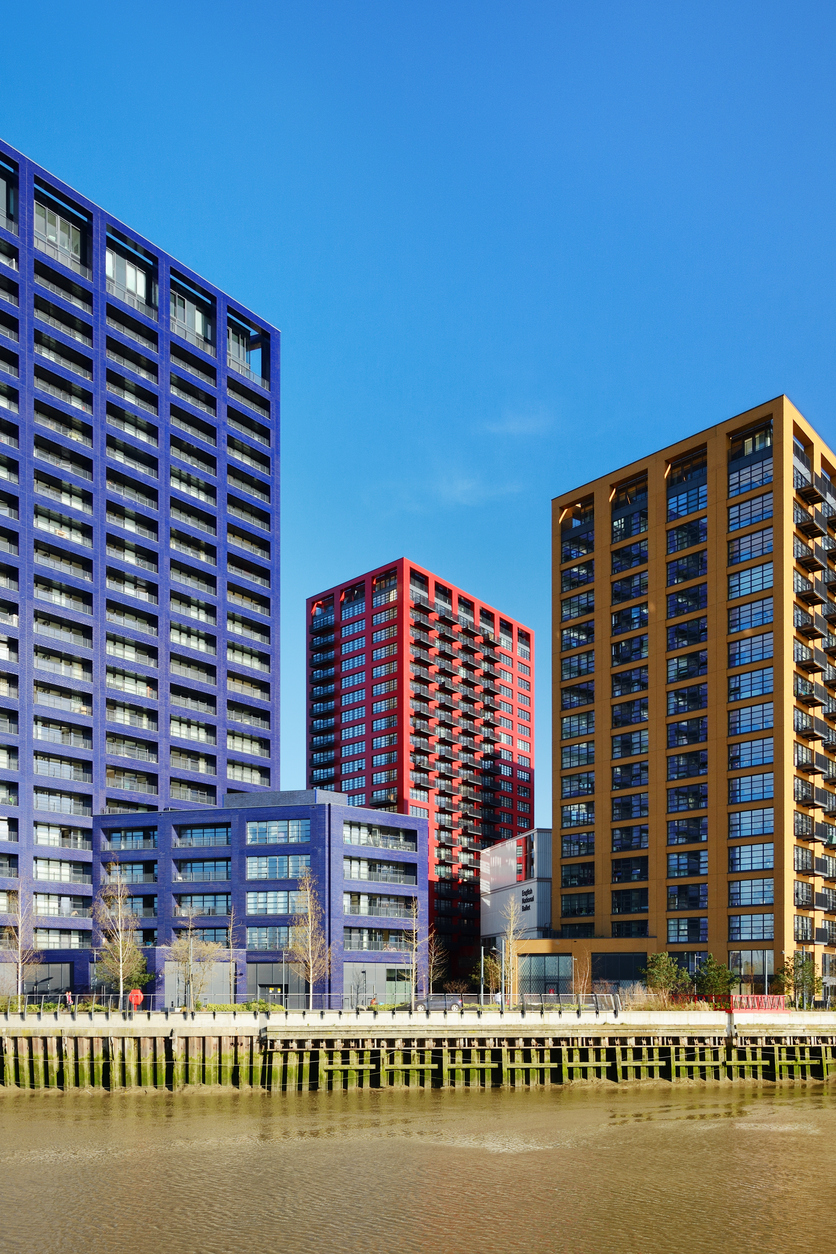



London City Island is among East London’s most high-profile regeneration developments. Designed by Ballymore and EcoWorld over 12 acres on the Leamouth Peninsula, the scheme integrates riverside living with cultural anchors (e.g. the English National Ballet), landscaped public realm, and amenities.
Here are the key advantages that make it compelling:
Strong Connectivity: It’s just a short walk to Canning Town station (DLR & Jubilee), giving fast access to Canary Wharf, London Bridge, the City, and onward links.
Amenity-Rich Environment: Onsite facilities such as gyms, landscaped gardens, cultural venues, concierge, and riverfront walkways add lifestyle appeal.
Regeneration Tailwinds: As East London continues to attract infrastructure investment, City Island acts as a catalyst district, benefiting from uplift in surrounding areas.
Yield & Rental Demand Potential: Fraser Bond’s data suggests rental yields in the area can reach around 5 % to 6 %, above many central London averages.
Capital Growth Prospects: Although London’s growth has moderated, City Island’s premium positioning and limited supply help support future value gains.
Given these strengths, many buyers and investors view City Island as a strategic buy for medium-to-long term horizons (5+ years).
Even a strong development comes with inherent trade-offs. Here are critical factors to assess:
Service Charges & Maintenance: High-spec developments often incur above-average service costs. These can erode net yield if not carefully modelled.
Communal Energy / Utility Charges: Heating, hot water or central systems may be charged separately (e.g. via a communal energy provider), making running costs less predictable.
Leasehold Structure & Restrictions: Flats are leasehold (not freehold). Your lease may impose restrictions on alterations, subletting, or require consent for changes.
Market Cycles & Interest Rates: London’s property market is sensitive to interest rates and regulatory changes (e.g. landlord tax regime, lending criteria). Short-term volatility is possible.
Supply & Competition: Multiple developments in East London may compete for tenants or buyers, possibly placing downward pressure on rents or prices if oversupply occurs.
Affordability & Price Premiums: City Island commands a premium for location, finishes, and branding — buyers must ensure price reflects realistic demand and yield calculations.
City Island is not a one-size-fits-all play. It tends to offer best value when aligned with certain strategies:
| Buyer Type / Use Case | Why It Works | Things to Check |
|---|---|---|
| Buy-to-Let Investors | Attractive yields, high tenant interest due to location, amenities and connectivity | Confirm net yield after charges, lease covenants, void risk |
| Owner-Occupiers Planning Future Letting | Living in the flat initially then renting later combines utility and upside | Check lease flexibility, resale demand and tenant appetite |
| Long-Term Portfolio Holders | The regeneration story and land scarcity support capital appreciation | Stress test scenarios, maintenance escalation, exit timing |
| Overseas Investors | London remains globally desirable; City Island offers a proven, premium development destination | Understand tax, foreign investment rules, letting compliance |
Fraser Bond’s viewpoint is that City Island is best suited for buyers with a 5+ year horizon who can absorb cost fluctuations while leveraging growth and income.
Let’s consider a hypothetical scenario:
Purchase a 2-bed flat in City Island at “X” price
Gross rental yield: 5.5 %
Service charge & utilities reduction: ~1 %
Net yield: ~4.5 %
Capital growth over 5 years: modest 2–4 % p.a. (when London stabilises)
Total return (income + capital) in this scenario could fall in the 5 % to 7 % per annum bracket, if managed well. This aligns with Fraser Bond’s internal forecasts.
Of course, individual outcomes will vary depending on block, view, lease length, and operational efficiency.
If you’re considering buying in London City Island, Fraser Bond offers a comprehensive suite of services to maximise your chance of success:
Due Diligence & Valuation Review — Cross-check asking prices and comparable sales
Lease & Covenant Analysis — Clarify restrictions on alterations, letting, service charge caps
Yield Modelling & Sensitivity Scenarios — Test worst/best case financials
Lettings & Management Strategy — Sophisticated tenant placement, furnishing, and maintenance planning
Exit Timing & Marketing Advice — Understand when and how to reposition your asset
Transparency on Charges & Compliance — Ongoing benchmarking, challenge of excessive costs
To access off-market units, tailored projections, or expert support for City Island acquisition, visit FraserBond.com.
Yes — for the right buyer, London City Island offers a compelling blend of lifestyle, connectivity, and investment potential. It is especially attractive to those with:
A medium to long-term horizon (5+ years)
Tolerance for higher service and operational costs
Desire for a riverside, premium, amenity-led home or investment
Willingness to engage with management and leasehold structures
That said, it is not ideal for those focused on short-term speculative gain, or buyers unwilling to accept variable costs or regulatory risk.
If you like, I can provide a bespoke investment scorecard comparing City Island versus a selection of East London alternatives (Canary Wharf, Stratford, Royal Docks) to help you pick the optimal location. Would you like me to do that?